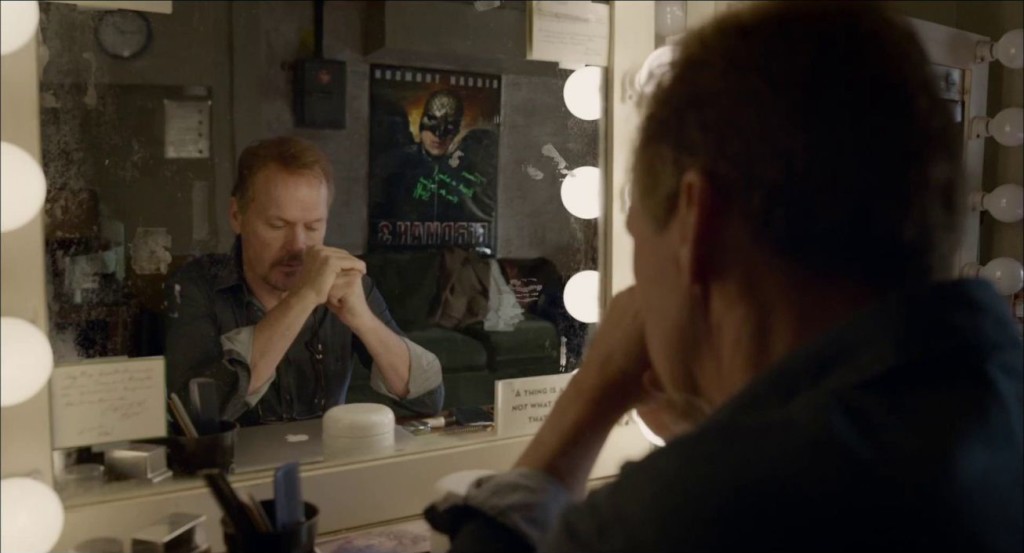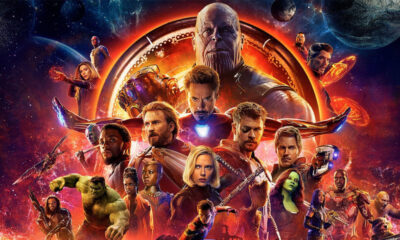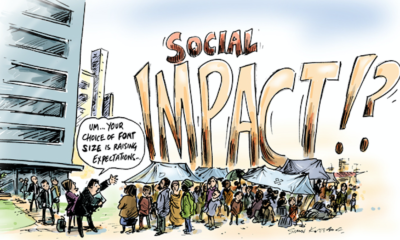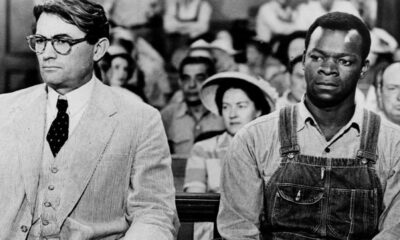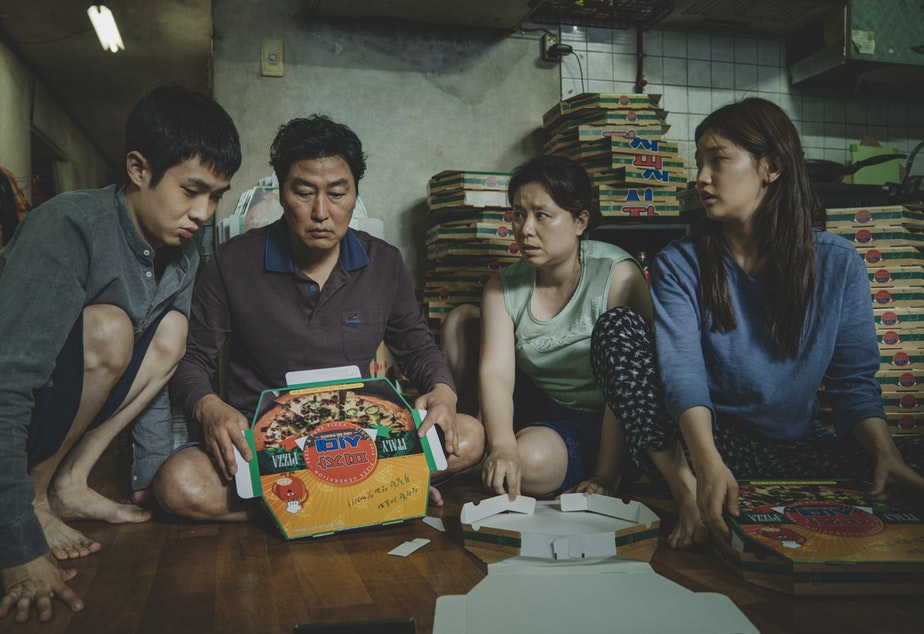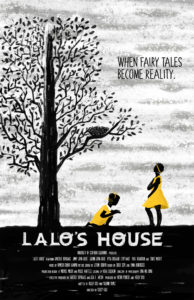Filmmakers
Whiplash to Birdman: Pursuing Greatness and All That Jazz
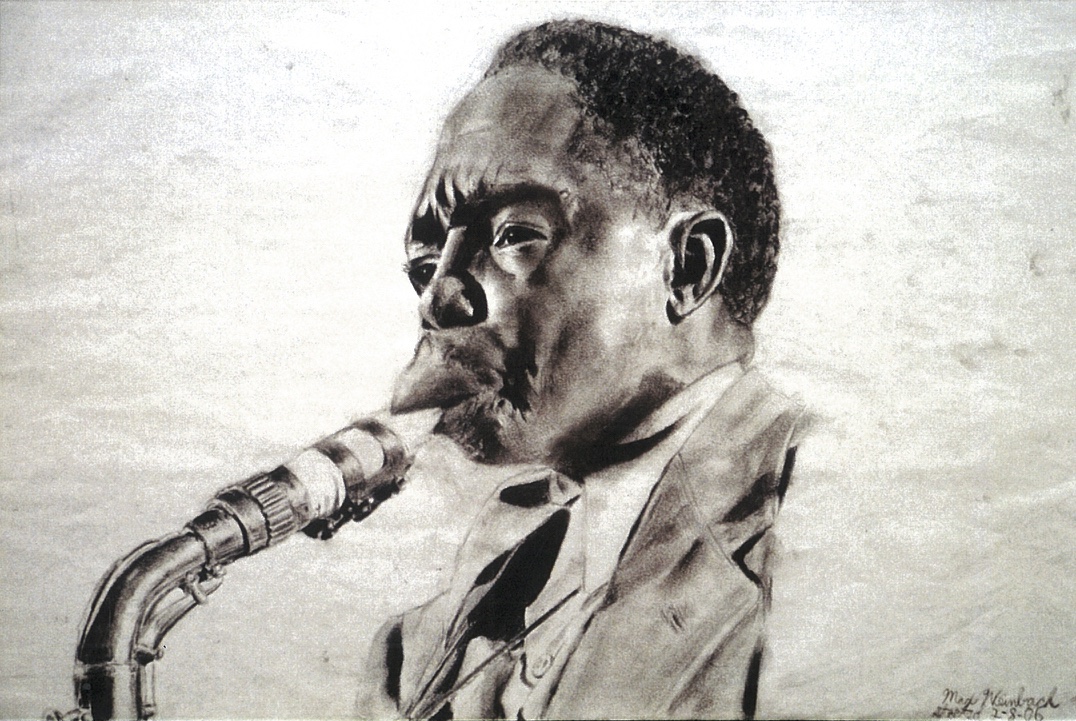
“I’d rather die drunk, broke at 34 and have people at a dinner table talk about me than live to be rich and sober at 90 and nobody remembered who I was.”
“Ah, but your friends will remember you, that’s the point.”
“None of us were friends with Charlie Parker. That’s the point.”
This exchange, between determined young jazz drummer Andrew Neiman and his disapproving uncle, encapsulates a philosophy that is shared by many artists: that above all else, being acknowledged for creating great art is worth any amount of personal sacrifice from the artist. Andrew is the focus of writer/director Damien Chazelle’s Whiplash, and he isn’t the only protagonist of the past year’s films to demonstrate this philosophy. In Birdman or (The Unexpected Virtue of Ignorance), Alejandro González Iñárritu presents Riggan Thompson, an actor similarly driven by the desire to achieve greatness, no matter what the cost. Both films portray an artist desperately striving to do something meaningful, important, and lasting before death, regardless of the potentially self-destructive consequences. They resonate with viewers not only because this desire for meaning guides many people’s lives, but also because each film uses the energy and rhythm of jazz to play on our senses and pack an even stronger emotional punch. Thus, these films have the power to embolden this egoist philosophy in audiences, especially the artists among them, for better or worse.
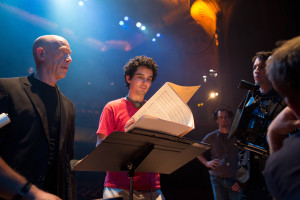 THE COST OF ART
THE COST OF ART
In the L.A. Times, Damien Chazelle talks about how “a lot of movies about artists are set up like sports movies, where they build to a big victory and the artist achieves their art like the athlete wins the big game, which is by learning how to balance their life at the end.” However, he believes that the truth of the artist experience is a bit darker, arguing “if someone is throwing themselves into their art in that way their personal life will probably suffer,” and he says that’s what he wanted to show in Whiplash. In the film, Andrew is a student at a prestigious conservatory of music, under the instruction of a particularly brutal instructor named Terrence Fletcher. Chazelle has said that “the movie, and the war between Fletcher and Andrew, is about the cost of art” and “a kid corrupted by the pressures of what he believes is required to be great.” For Andrew, that means hours and hours alone in a practice room, furiously drumming until his hands start to bleed, and enduring relentless verbal abuse from Fletcher. To motivate the boy, and justify his own behavior, Fletcher repeatedly tells a story about how Jo Jones threw a cymbal at a young Charlie Parker’s head after a bad performance, embarrassing him so much that he practiced endlessly until he ultimately became the great musician known as “Bird.” While this story may be an exaggeration of the truth, Andrew takes it to heart, and begins to alienate those around him as a result of his singular focus.
Andrew breaks off his relationship with his girlfriend, believing that she’ll hold him back and prevent him from pursuing his goal. When he tells her that it’s because he wants to be great, and she responds with “And you’re not?”, his answer is definitively “I want to be one of the greats.” (Like Charlie Parker, for instance.) And he will risk anything to achieve that, including his life. Determined to make it on time to an important performance, Andrew drives recklessly and ends up in a car  crash that nearly kills him. Pleading for Andrew to stop pushing himself to such extremes, his father says, “There is nothing in the world more important to me than you. Don’t you know that?” To his dismay, it is clear by the end of the film that there is still something in the world more important to Andrew than his father’s love or approval: music. When he’s back on stage in the final scene, in an epic showdown with Fletcher, Andrew bursts into a drum solo that is terrifying in its intensity. We see a shot of his father watching from the lobby doors, not with a look of pride or happiness, but one of horror and bewilderment. As Chazelle writes in the script, “Jim watches Andrew — crazed, exhausted, looks like he’s pushing himself past what is safe — and knows there is no longer anything he can do about it. He has lost.” What he’s lost here is the battle to prevent Andrew from embracing this self-destructive artistic life. Undeterred by his father’s best efforts to discourage it, Andrew will still risk everything to become “one of the greats.”
crash that nearly kills him. Pleading for Andrew to stop pushing himself to such extremes, his father says, “There is nothing in the world more important to me than you. Don’t you know that?” To his dismay, it is clear by the end of the film that there is still something in the world more important to Andrew than his father’s love or approval: music. When he’s back on stage in the final scene, in an epic showdown with Fletcher, Andrew bursts into a drum solo that is terrifying in its intensity. We see a shot of his father watching from the lobby doors, not with a look of pride or happiness, but one of horror and bewilderment. As Chazelle writes in the script, “Jim watches Andrew — crazed, exhausted, looks like he’s pushing himself past what is safe — and knows there is no longer anything he can do about it. He has lost.” What he’s lost here is the battle to prevent Andrew from embracing this self-destructive artistic life. Undeterred by his father’s best efforts to discourage it, Andrew will still risk everything to become “one of the greats.”
Greatness in art is difficult to measure, and it is often considered a subjective assessment (despite what Andrew Neiman may tell his cousins at the dinner table in Whiplash). This question of determining success and value in the arts is one of the many themes at play in Alejandro González Iñárritu’s Birdman. Like Andrew, Birdman’s Riggan Thompson ascribes greatness to those artists whose legacy and reputation have an impact long after their death. One such artist he admires is writer Raymond Carver, whose short story “What We Talk About When We Talk About Love” serves as the basis for a play Riggan is adapting, directing, and starring in. This is his last-ditch effort to create something great, so that he isn’t remembered as just a washed-up actor who once starred as a superhero called Birdman. Riggan too embarks on a damaging, downward spiral in pursuit of this goal, distancing himself from all of the people he used to care about. Nearly every other character in the film calls Riggan an “asshole” at some point, and he is. He lashes out at his cast and crew, neglects his troubled daughter, rejects his possibly pregnant girlfriend, and drinks away his problems. This is all exacerbated of course by his ever-increasing break with reality, convinced he has telekinetic powers and tormented by the voice of his Birdman alter-ego. But for Riggan, none of this matters as much as his play, for which he is determined to get a great review. So when theater critic Tabitha Dickinson tells him she is going to ruin him with hers because he is “entitled, selfish…and unprepared to even attempt real art,” he snaps back with, “This play cost me everything!”
THE RHYTHM OF SUFFERING
For Riggan, and other artists, suffering in and of itself can even distinguish what they are doing as art. The very act of putting themselves through hell gives meaning to what they have created, in order for them to justify having endured it. This recalls the “cost of art” to which Damien Chazelle refers. From jazz musicians to actors to writers, there is a long history of artists who have put their own health, relationships, and long-term careers at risk in an effort to truly become great. And in many cases, the self-imposed pain and suffering caused by a life of reckless decisions even fuels the artistic process. Psychologist Cheryl Arutt describes how creating art is often used as a way to channel emotional intensity, and in turn, many artists “carry the belief that their pain is the locus of their creativity.” This quickly becomes a problem when those artists “hold onto their pain as if it were a lifeline, even finding ways to enhance it, leading to some patterns of behavior that won’t ‘turn off’ even when they want them to.” This may be why some artists develop addictions that ultimately destroy them, as alluded to in the debate in Whiplash about the lifestyle of Charlie Parker.
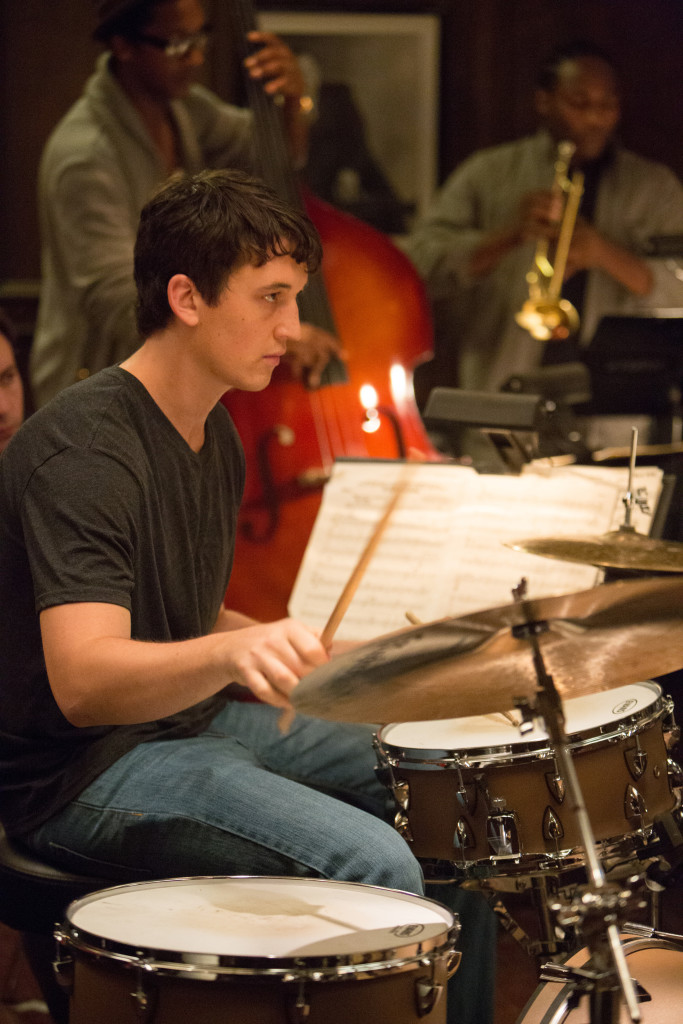 According to philosopher Roland Barthes (who is humorously referenced in the beginning of Birdman), “Each of us has his own rhythm of suffering.” In both Whiplash and Birdman, jazz is used to create and enhance that literal and metaphorical rhythm. As a form of music, jazz is known for its signature element of improvisation, and that inherent risk in taking chances makes it a perfect compliment for the journey of these characters. When Andrew plays the same few bars over and over at Fletcher’s demand, we feel the tension as the other students and Andrew (and the audience) wait to hear if Fletcher thinks he’s “rushing” or “dragging.” When he beats the drums faster and faster while practicing, we can almost feel his exhaustion as his sweat pours and the tempo increases. And when we watch, and more importantly hear Andrew play his minutes-long solo during the final scene of the film, his victory over Fletcher feels satisfyingly realized. While Whiplash is explicitly about a jazz musician, Birdman also relies on that rhythm and sound, with a percussion-filled score composed by acclaimed Mexican jazz drummer Antonio Sanchez. In an interview with the Huffington Post, Sanchez details how director Iñárritu wanted the drums to “inject rhythm and energy into the film” to “underline the dramatic factors as well as the mental and emotional turmoil that the main character is going through.” As such, whenever Riggan’s world begins to spin out of control, the chaos of drums and cymbals adds that extra kick. Essentially, through the score, the audience experiences a tangible manifestation of his changing emotions.
According to philosopher Roland Barthes (who is humorously referenced in the beginning of Birdman), “Each of us has his own rhythm of suffering.” In both Whiplash and Birdman, jazz is used to create and enhance that literal and metaphorical rhythm. As a form of music, jazz is known for its signature element of improvisation, and that inherent risk in taking chances makes it a perfect compliment for the journey of these characters. When Andrew plays the same few bars over and over at Fletcher’s demand, we feel the tension as the other students and Andrew (and the audience) wait to hear if Fletcher thinks he’s “rushing” or “dragging.” When he beats the drums faster and faster while practicing, we can almost feel his exhaustion as his sweat pours and the tempo increases. And when we watch, and more importantly hear Andrew play his minutes-long solo during the final scene of the film, his victory over Fletcher feels satisfyingly realized. While Whiplash is explicitly about a jazz musician, Birdman also relies on that rhythm and sound, with a percussion-filled score composed by acclaimed Mexican jazz drummer Antonio Sanchez. In an interview with the Huffington Post, Sanchez details how director Iñárritu wanted the drums to “inject rhythm and energy into the film” to “underline the dramatic factors as well as the mental and emotional turmoil that the main character is going through.” As such, whenever Riggan’s world begins to spin out of control, the chaos of drums and cymbals adds that extra kick. Essentially, through the score, the audience experiences a tangible manifestation of his changing emotions.
The most prominent and effective uses of the score in this way are in association with the appearances of Riggan’s Birdman alter-ego. Whenever the voice of Birdman grows stronger and overpowers Riggan’s own thoughts, so too does the sound of drumming. And when Riggan fights back and breathes deep, trying to calm the beast, the drums subside slightly, with the score shifting to just a pattering of cymbals. So when the drum hits start to crescendo, it’s clear that Birdman has the upper hand, as when the voice taunts Riggan with “What are you trying to prove? That you’re an artist? Well you’re not!” Iñárritu refers to these moments in the film as Riggan’s “battles with the ego,” where “his ego – faithful friend and tormentor…confronts him with his multiple limitations and delusional possibilities.” The director himself admits to sharing this “delusional ambition of artists, thinking that we have an impact that will change the soul of humanity and transcend time and eternity” – and it is that frenzied pursuit of relevance and significance that both drives and tortures Riggan throughout the film. This “journey of validation,” as Iñárritu calls it, draws on a similar portrait of the artist experience in Bob Fosse’s seminal film on the topic, All That Jazz.
THE ARTIST & THE EGO
Fosse’s semi-autobiographical film centers on director and choreographer Joe Gideon, who much like Riggan Thompson and Andrew Neiman, disregards his personal health and sabotages relationships with those around him for the sake of his art. Even after suffering a heart attack and being told by doctors he could die if he goes back to rehearsal, Gideon responds with the same stubborn doggedness, “You’ve got to be kidding. I’ve got a show to put on.” In Variety’s review of that film, the critic declares that “the film’s major flaw lies in its lack of real explanation of what, beyond ego, really motivates Gideon.” But what if, for artists, ego is enough of a motivation? What if ego is actually the primary reason for creating art? By its very nature, the act of creating something and presenting it to the world in a public forum presumes that someone else besides the creator will find value in it. That itself is a narcissistic idea. And indeed, in his Golden Globes acceptance speech for Best Screenplay for Birdman, Alejandro González Iñárritu answers his own question (posed in haunting Birdman voice) of “How did we end up here?” with the admission, “Everything was about the ego.” So, is that a problem? The danger in this emerges when artists become so consumed by this self-centered conviction that it damages the other aspects of their lives, as with Andrew or Riggan or Joe Gideon. At the end of All That Jazz, Gideon’s life is summed up by fictional TV personality O’Connor Flood:
This cat allowed himself to be adored, but not loved. And his success in show business was matched by failure in his personal relationship bag — now that’s where he really bombed. And he came to believe that show business, work, love, his whole life, even himself and all that jazz, was bullshit.
Is this the way that it has to be for artists whose “delusional ambition” for relevance leads them on a perpetual “journey of 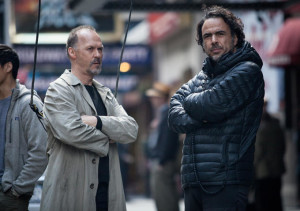 validation” like Iñárritu describes? Damien Chazelle too talks about how as an artist “you’re frightened to disappoint people,” and even when you create something that people like, “it’s easy to take that for granted or, on the other hand, get addicted to it.” Like their characters, these directors are also artists seeking greatness, likely making sacrifices in the pursuit of that goal. But is it possible for artists to choose that path and avoid this common self-destructive pattern? Although Charlie “Bird” Parker is quoted as saying “there’s no boundary line to art,” should there be boundaries to the lengths that artists will go to create it? While many artists, like the protagonists of these films, appear to believe that such sacrifices are an obligation or a necessity, perhaps they don’t see them as that. In Birdman, Riggan’s ex-wife accuses him of the same thing that O’Connor Flood decries about Joe Gideon, when she tells him, “That’s what you always do. You confuse love for admiration.” But perhaps for artists, these can be equivalent in value. In constantly seeking validation and recognition throughout life, this sort of affirmation can become just as important to an artist as the things that others may perceive they are sacrificing. Birdman begins with a Raymond Carver poem titled “Late Fragment,” which appears as text right before the title card. It is the final poem in Carver’s final published work, A New Path to the Waterfall, which was written while he was dying of cancer.
validation” like Iñárritu describes? Damien Chazelle too talks about how as an artist “you’re frightened to disappoint people,” and even when you create something that people like, “it’s easy to take that for granted or, on the other hand, get addicted to it.” Like their characters, these directors are also artists seeking greatness, likely making sacrifices in the pursuit of that goal. But is it possible for artists to choose that path and avoid this common self-destructive pattern? Although Charlie “Bird” Parker is quoted as saying “there’s no boundary line to art,” should there be boundaries to the lengths that artists will go to create it? While many artists, like the protagonists of these films, appear to believe that such sacrifices are an obligation or a necessity, perhaps they don’t see them as that. In Birdman, Riggan’s ex-wife accuses him of the same thing that O’Connor Flood decries about Joe Gideon, when she tells him, “That’s what you always do. You confuse love for admiration.” But perhaps for artists, these can be equivalent in value. In constantly seeking validation and recognition throughout life, this sort of affirmation can become just as important to an artist as the things that others may perceive they are sacrificing. Birdman begins with a Raymond Carver poem titled “Late Fragment,” which appears as text right before the title card. It is the final poem in Carver’s final published work, A New Path to the Waterfall, which was written while he was dying of cancer.
“And did you get what you wanted from this life, even so?
I did.
And what did you want?
To call myself beloved, to feel myself beloved on the earth.”
The poem reads as if Carver is reflecting on the life that he has lived, evaluating whether or not he has achieved the admiration sought by the likes of Andrew Neiman or Riggan Thompson. The words “even so” imply the years of sacrifice or suffering to get there, but the concluding sentiment of the poem is ultimately positive. While the true measure of an artist’s greatness may not be known till years after death, artists can find satisfaction in the moments of appreciation experienced in life, just as we do in moments of pleasure, like watching a film or listening to some jazz.
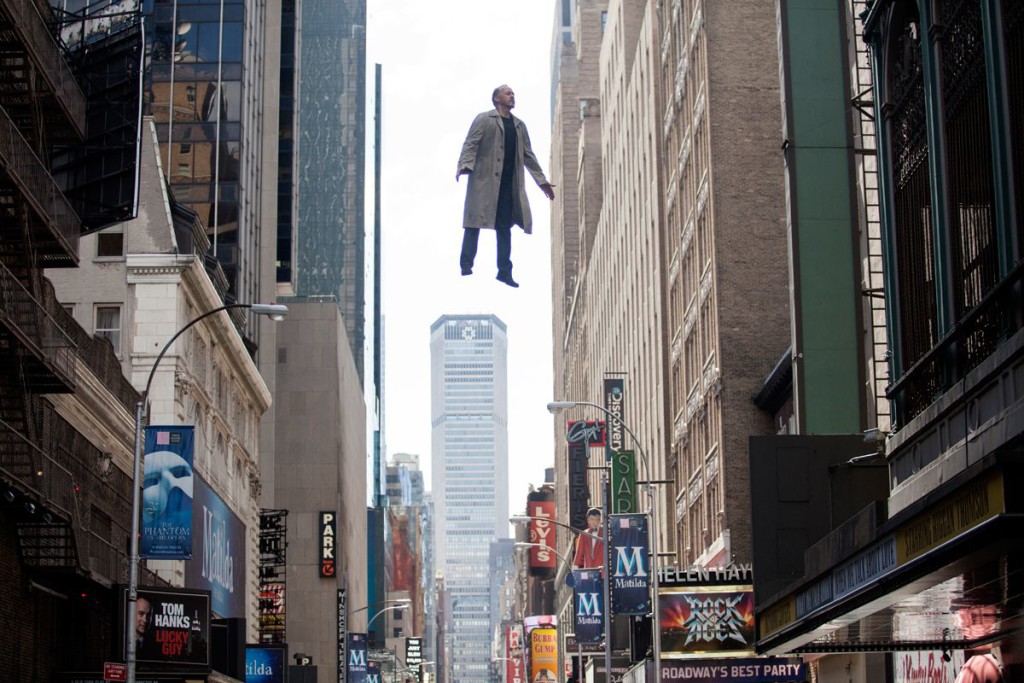
Filmmakers
Out of the Basement: The Social Impact of ‘Parasite’
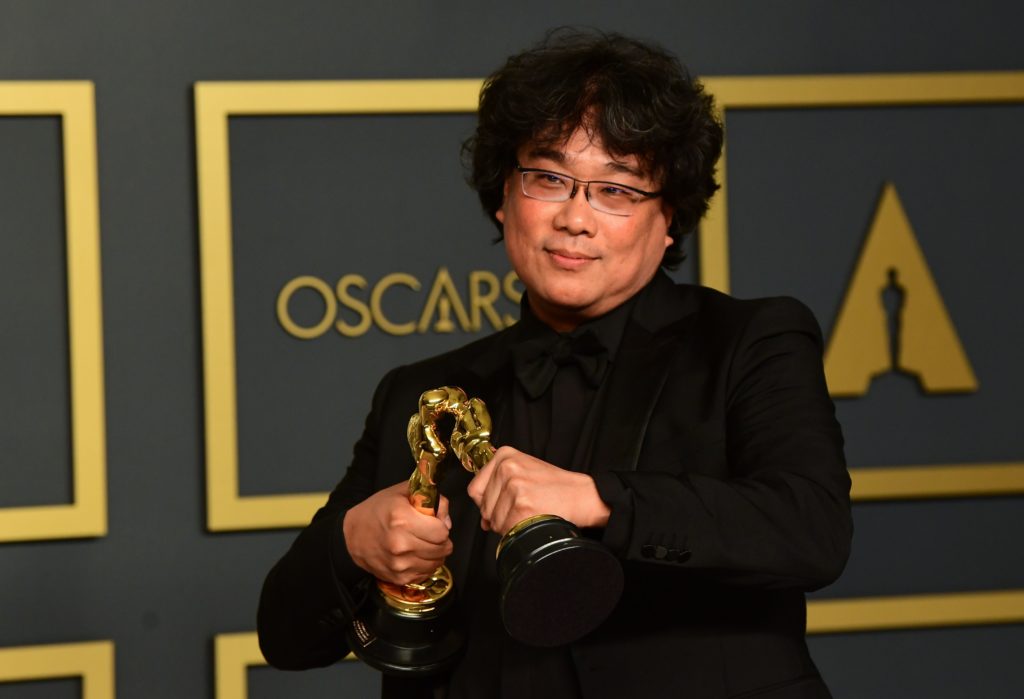
When Bong Joon-ho’s Parasite won multiple Oscars at this past weekend’s 92nd Academy Awards, the reaction was one of almost unanimous joy from the attendees and much of the American audience. Setting aside the remarkable achievement of a South Korean movie being the first to win Best Picture, this was due to the fact that so many people have been able to identify with Bong’s film, engaging in its central metaphor(s) in their own individual ways. Everyone from public school students to Chrissy Teigen have expressed their affection for the film on social media, proving that the movie has reached an impressively broad audience. The irony of these reactions is noting how each viewer sees themselves in the film without critique—those public school students find nothing wrong with the extreme lengths the movie’s poor family goes to, and wealthy celebrities praise the movie one minute while blithely discussing their personal excesses the next. Parasite is a film about class with a capital “C,” not a polemic but an honest and unflinching satire that targets everyone trapped within the bonds of capitalism.
Part of Parasite’s cleverness in its social commentary is how it depicts each class in such a way as to support the viewer’s inherent biases. If you’re in the middle-to-lower classes, you find the Kim’s crafty and charming, and echo their critiques of the Park’s obscene wealth and ignorance. If you’re a part of the upper class, you empathize with the Park’s juggling of responsibilities while indulging in their wealth, and have a natural suspicion toward (if not revulsion of) the poor. If you have a foot in both worlds, like housekeeper Moon-gwang and her husband Geun-sae, you can understand how the two of them wish to not upset the balance, so that they can secretly and quietly profit. All throughout Parasite, there’s a point of view to lock onto.
The point of the film is not to single out one of these groups as villainous, but to show how they’re part of a system that is the true source of evil. The movie has been criticized for lacking a person (or persons) to easily blame, which would of course be more comforting dramatically. Bong (along with co-writer Han Jin-won) instead makes the invisible systems of class and capitalism the true culprit, which is seen most prominently at the end of the film. All the characters are present at the same party, whether as hosts, guests, help, or uninvited crashers, and each class group suffers a mortal loss. It’s all part of the tension built throughout the movie coming to a head, yet there’s an inevitability to these deaths as well, a price each group inadvertently pays to keep the corrupt system they’re all a part of running. In this fashion, the movie is reminiscent of several works of dystopian fiction, such as Shirley Jackson’s “The Lottery,” and Aldous Huxley’s “Brave New World.” The film particularly recalls Ursula K. Le Guin’s short story “The Ones Who Walk Away from Omelas,” in which a utopian society is dependent on the continual torture and misery of a single child. Every system demands sacrifice, and Bong and Han make clear that that sacrifice is paid many times over.
The real twist of the knife in Parasite is the epilogue, which reveals that the real point of the class and capitalist systems is to keep as many people in their place as possible. The Park’s remain wealthy, and easily move away from their old house. The Kim’s remain in their same squalid hovel, with their patriarch now stuck in the basement hideaway of the Park’s old home. In “Omelas,” the tortured child is kept in a basement, as well, and where that story tells of individuals who reject that system and choose to leave it, Parasite shows that everyone has chosen to stay, with the erroneous belief that they can eventually change their place. The film’s intense relatability is likely the main reason for it being so beloved, yet it’s the messages it sneaks in that will hopefully be its most lasting social impact. All of us are still trapped within the system, but at least the secret of how it fails us and how it lies has managed to escape the basement. Let’s hope we can eventually escape, too.
Filmmakers
What are the challenges of filming a foreign culture?

Filming a foreign culture is not like filming your own. There are a lot of challenges that are faced by people to film a foreign culture. One of the basic reasons is that you may not know much about that culture, which will act as a drawback when trying to accurately record it. It is not about the niche of the location, but the reality of it and where that takes us. When you film culture, you must have a great understanding of it. Therefore, you should study it to get a good understanding of the nuances of the culture.
Films have a huge impact on other societies, and if your film lacks the essence of the culture, it won’t be able to give a good impression to your viewers. A lot of people get overwhelmed by other cultures and their uniqueness, most of the times getting an idea about other cultures through film, television, and the internet. Be it culture or any other information, filming has played a huge role in cultivating an impression on the minds and hearts of the people.
Filming Foreign Cultures – A Challenge
Filming in foreign countries is difficult because penetrating deep into the society of any country and culture requires a good understanding of the subject. Having that understanding can alleviate these hurdles.
Seeing the Foreign Culture Through the Eyes of the Camera
Most of us get the an idea of foreign cultures from media representations, this is because we cannot experiences all the worlds cultures for ourselves. That’s why people use social media and other internet platforms to learn about different cultures around the world. That is why whatever you make, people will see, and start believing. Which is why there is a huge responsibility to show different cultures accurately.
Challenges Faced During Filming
When you take ownership of showing the world different foreign cultures, you must make sure that everything is authentic. Made up stories won’t do because they will have a bad impact on the culture but also your credibility. That is why you should try to keep things real and accurate.
Originality
Keeping everything in its original state is the best thing video maker can do. Uniqueness and creativity are acceptable, but when the things start getting faux, the real essence gets lost, which is why it’s important preserve things in their original form.
Money and Finances
For film shooting in foreign countries, a lot of money and financial aids are required. Very good artists don’t get the opportunity to use their abilities because they don’t have enough money to film. For productive and creative filmmaking you need money, if that’s not there the problems are obvious.
Video Making on Demand
If there is a demand for a particular story, everyone will try to make videos on that subject. Sometimes, in these cases, the real story gets hidden. Many times, people do not film what is needed because they re too busy filming what is trending. This affects the film industry and the filmmakers as well.
Lack of Creativity
Lack of creativity is no doubt a huge challenge for the film making industry. Sequels and remakes of the videos are not something in demand and that demeans the meaning of creativity. If you want to make a statement, you must show how creative you are. This will help you get to the limelight in no time.
The film industry is progressing at a very fast pace and with great power comes huge responsibility, that’s what we all need to understand. Admit the fact that what you portray will be saved forever, and that slight irresponsibility can ruin another culture, which should not be the intention of anyone.
This article was written by William Roy, check out his website Movie Trivia
Academia
What is USC’ Media Institute for Social Change?
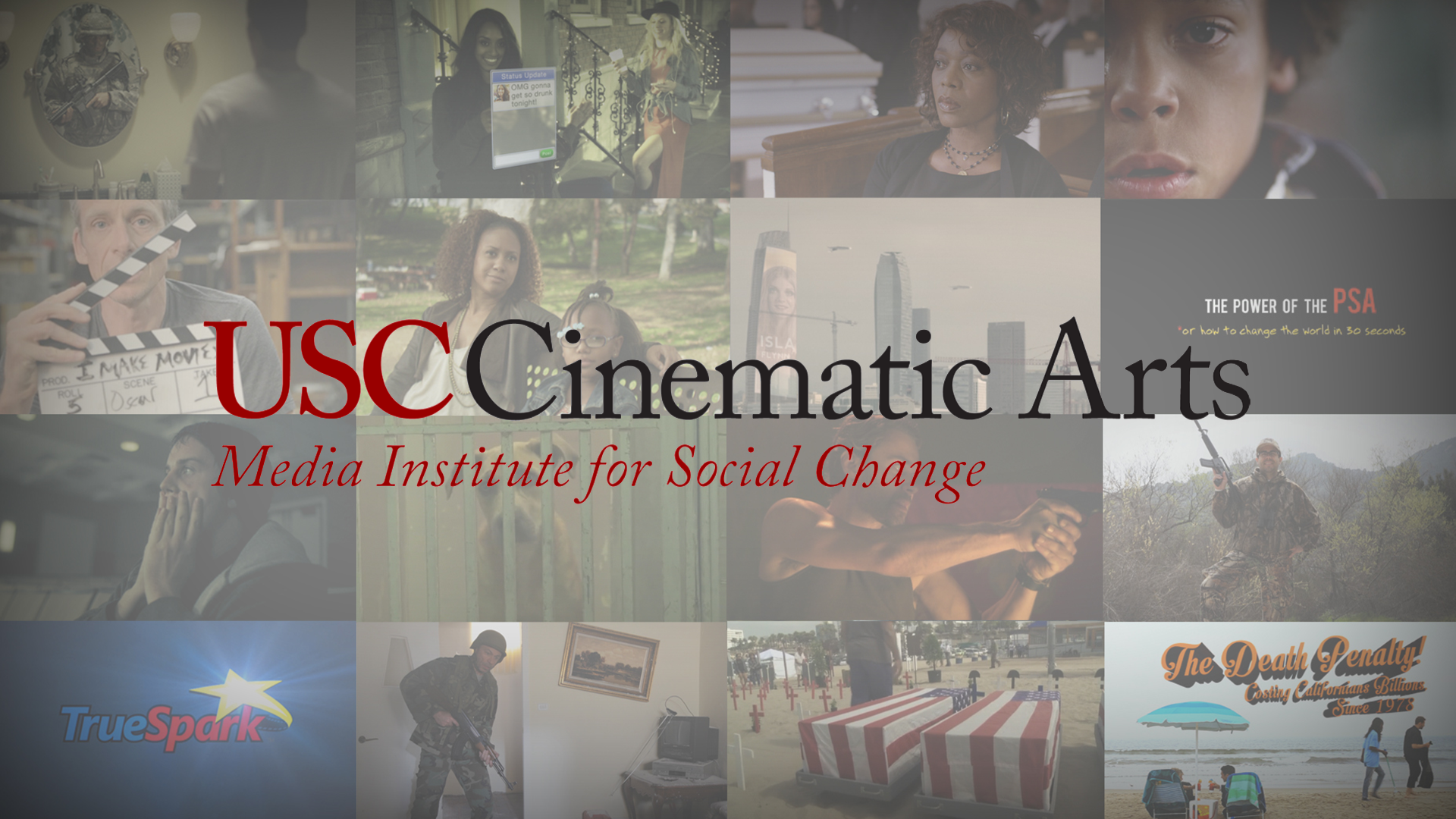
The Media Institute for Social Change, known as MISC, is a production and research institute at the USC School of Cinematic Arts focused on using media as a tool for effecting social change. Founded in 2013 by Michael Taylor, a producer and Professor in the School’s famed Film & Television Production Division, the MISC maxim is that “entertainment can change the world.” It spreads this message by producing illustrative content, and by mentoring student projects, awarding scholarships and leading research. “We are training the next generation of filmmakers to weave social issues into their films, television shows and video games,” says Taylor. “As creators the work we do has a huge impact on our culture and that gives us an opportunity to influence good outcomes.”
In recent years MISC has partnered with organizations including Save the Children, National Institutes of Health and Operation Gratitude, and creative companies like Giorgio Armani, the Motion Picture Association of America and FilmAid, to create groundbreaking work that have important social issues woven into the narrative. MISC also worked with USC’s Keck School of Medicine to create Big Data: Biomedicine a film that shows how crucial big data has become to creating breakthroughs in the medical world. Other MISC films include the upcoming The Interpreter, a short film centered on an Afghan interpreter who is hunted by the Taliban, and The Pamoja Project, the story of 3 Tanzanian women who determined to help their communities by immersing themselves in the worlds of microfinance, health and education. MISC has also partnered with the app KWIPPIT to create emojis that spread social messages. Together they co-hosted the Project Hope L.A. Benefit Concert to spread awareness about the massive uptick of homelessness in Los Angeles.
The Power of the PSA or How to Change the World in 30 Seconds, which documented the institute’s collaboration with the Los Angeles CBS affiliate KCAL9 to make PSAs on gun violence, internet safety, and PTSD among veterans. Another MISC-sponsored film, Lalo’s House, was shot in Haiti with the intention of exposing the child trafficking that is rampant there and in other countries, including the United States. The short film (which is being made into a feature) was used by UNICEF to encourage stricter legislation prohibiting the exploitation of minors, and has won several awards, including a Student Academy Award.
“Our goal,” says Taylor, “is to send our students into the industry with the skills and desire to make entertainment that has positive impact on our culture.” The dream is a variety of mass-media entertainment where social messages aren’t an afterthought but are central to the storytelling.
For more about MISC and its projects, go to uscmisc.org.
-
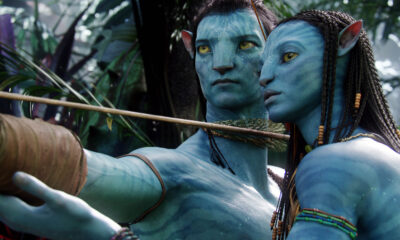
 SIE Magazine9 years ago
SIE Magazine9 years agoWhat Makes A Masterpiece and Blockbuster Work?
-
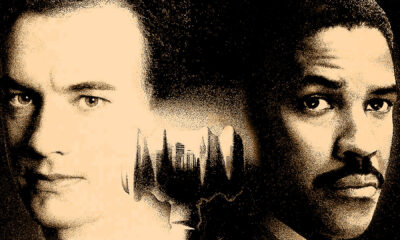
 Filmmakers9 years ago
Filmmakers9 years agoFilms That Changed The World: Philadelphia (1993)
-

 Companies6 years ago
Companies6 years agoSocial Impact Filmmaking: The How-To
-
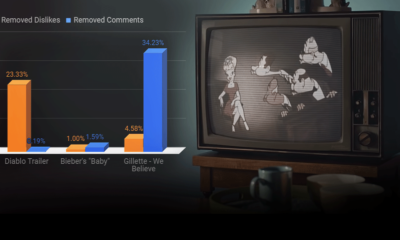
 Media Impact5 years ago
Media Impact5 years agoCan We Believe The Gillette Ad?
-

 SIE Magazine9 years ago
SIE Magazine9 years agoDie Welle and Lesson Plan: A Story Told Two Ways
-

 Academia8 years ago
Academia8 years agoFilmmaking Pitfalls in Deal-Making and Distribution
-

 Academia8 years ago
Academia8 years agoJoshua Oppenheimer: Why Filmmakers Shouldn’t Chase Impact
-

 Filmmakers9 years ago
Filmmakers9 years agoStephen Hawking vs The Elephant Man

